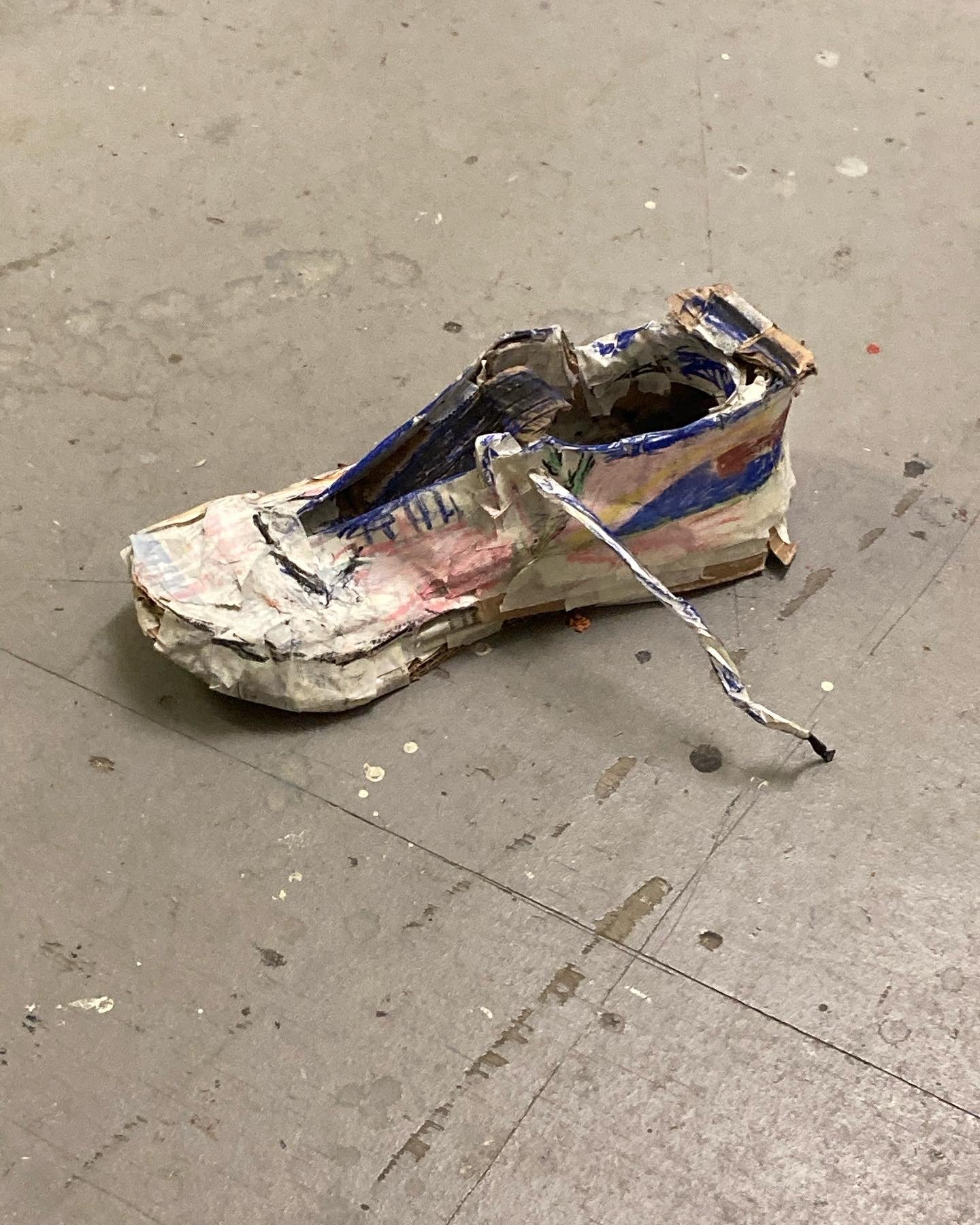Terrace history:
London based painter Karl Beilik first opened Terrace Gallery in 2004 as an artist run Gallery in Hackney, London. Exhibitions have been held at Terrace Studios, a reclaimed wasteland and in a pub back room. Over the years more than 50 exhibitions showing works by over 500 Artists including the likes of Matthew Collings, Bob and Roberta Smith, David Leapman, Mali Morris and Eddie Peake.
‘From the Big Splash to the Last Splash: London’
Artists need each other. This is true from the very beginning of their careers when observing and copying existing works is part of learning to the very end when established networks provide support, context and legacy. This group show is about one particular sort of relationship that has only been possible since the advent of social media. Its genesis was in the physical restrictions imposed during the Coronavirus pandemic but this is more than just a COVID story. The works collected here have been freed from their Instagram grid and brought together through an informal network centred around the Glasgow-based artist Toby Messenger. Most of the artists have never met in person and may never meet either Toby or each other.
Group shows are often the starting-point for both artist and curator: teaching at art schools is a communal exercise in which assessments both formative and summative are conducted collectively as students respond to each other’s work and examiners encounter each emerging artist in the context of a wider degree show. On graduation, first shows are also often collective endeavours sometimes memorably hung in communal flats or in unexpected commandeered spaces: under railway arches, in disused shops, in hospital waiting rooms.
From these early starts, artists begin to develop the repertoire of marks, palette, media, subjects, and conceptual concerns that will define their own work and might also collectively define the works of their peers. In some situations we can either contemporaneously or retrospectively connect the works into ‘movements’ and find a label that fits. In others, the connections between works are much less concrete and instead might reflect not proximity and coherence but distance and variation.
The distances represented in this show are both geographic and temporal: the artists are (mostly) based in either London or Glasgow, but only mostly. Some are personal friends of the curator Toby Messenger, some are Instagram connections. Some are at the very beginning of their careers, some right at the very end (or beyond, given the inclusion of posthumous work by Paul Martin made generously possible by his son Henry). If there is a guiding sensibility it is that of Messenger’s and (as he explains in the most basic but powerful terms) “what caught my eye”.
What might seem a simple, even naïve, approach: identifying, requesting and assembling a show of things that merely caught the eye is, of course, anything but. Quite aside from the complicated logistics of contact, relationship-building, shipping, and hanging there is the question of what these works say to us and to each other when they meet fleetingly in a single space at a particular time before again dispersing.
For Toby, the answers to these questions are immanent in the process of collecting and showing the work: the collective effect is as yet unknown and might only reveal itself after the show when it remains only in the memories of those involved as artist or viewer or both. Until the works started to arrive in cardboard and tape packages (brilliantly echoing Toby’s own sculptural work which renders the world around him in corrugated card, tape, and colours) how they might speak to each other or to the viewer as a collective experience remained entirely unknown. An even more straightforward surprise is how they look in, for want of some better phrase, ‘real life’ after existing only as digital images in the imagination of Toby as curator.
As viewers we have the same experience, moving from the screen invitation to what Rosalind Krauss described in 1979 as the “surprising things” of the gallery. The ‘surprise’ can be more subtle than the experiential blowtorch of some contemporary curation, but surprise there is all the same in the physicality of the work and in the beginning of relationships both aesthetic and personal that emerge when works are shown together.
In Messenger we see a curator that is less the self-appointed guardian or bearer of culture and much more a co-participant in the emergence of meaning. His role is, in the words of Kate Fowle, “more flexible and therefore also more vulnerable”. Here then, to paraphrase Szeeman, is an enthusiast, an administrator, an author of introductions, a postal depot regular, a van driver, a hanger, and a contributor.
None of these activities are small: they require both stamina and a reserve of joy in the process. Of the many possible sources of joy (and not least the pleasure of making connections and new friends alongside the old) is the particular pleasure of spending time with new works that all share qualities of both stillness and immanence.
The “silent intensity” that the late Paul Martin’s son Henry ascribes to to his father’s raw confrontations with the beauty of Australia’s west coast is echoed across the show, testament not only to Messenger’s ‘eye’ in drawing together so many affecting works, but also to his ability to actively develop, support and maintain a growing network of dispersed artists who despite geographical and temporal distance nevertheless share a common response to the world around them in which possibility is everything.
What happens when they are shown together is as yet unknown, but the exhibition is just part of a process of bringing together: not the ‘last splash’ of an intense period of work, but the first dive into a bigger world of connections and potential.
Dr Catherine Owen, March 2023

